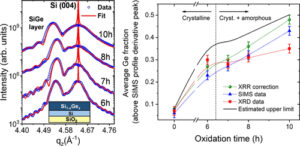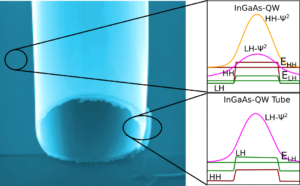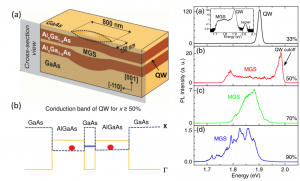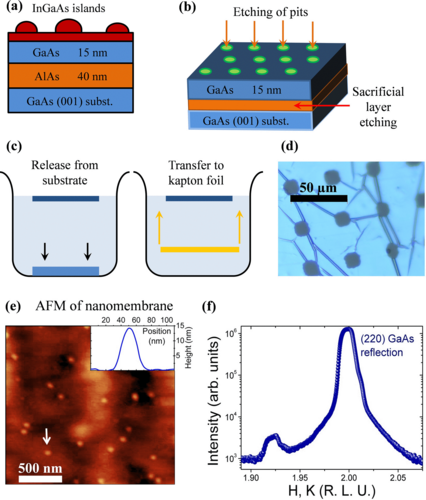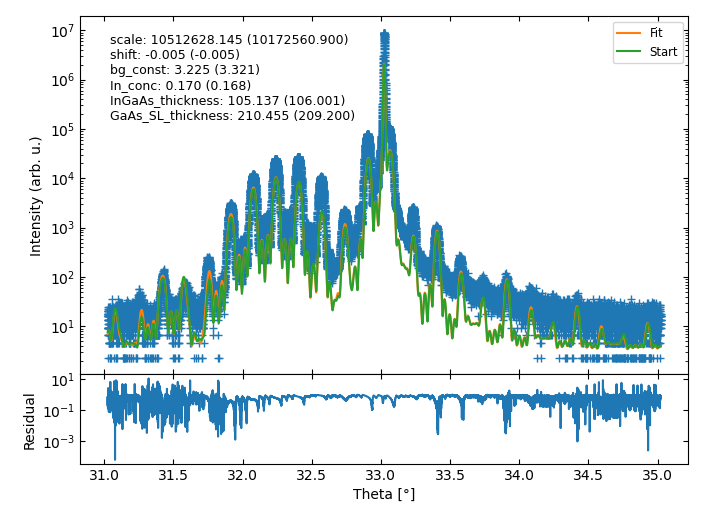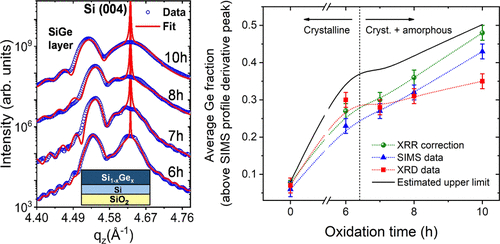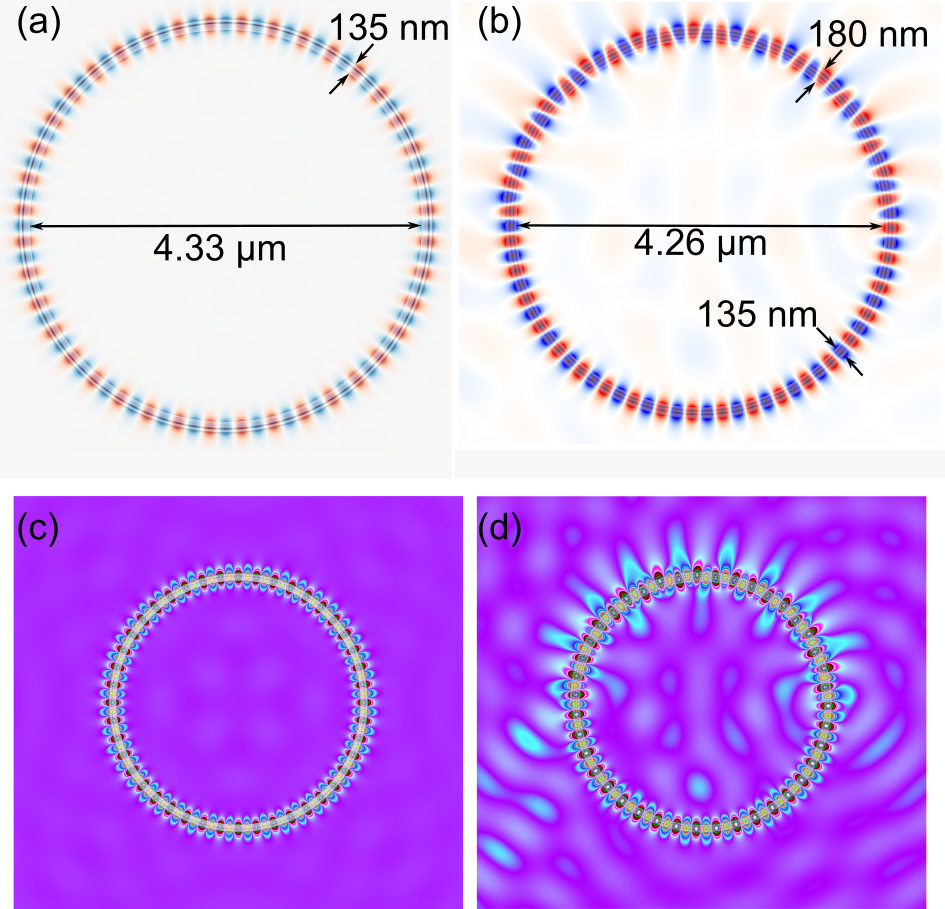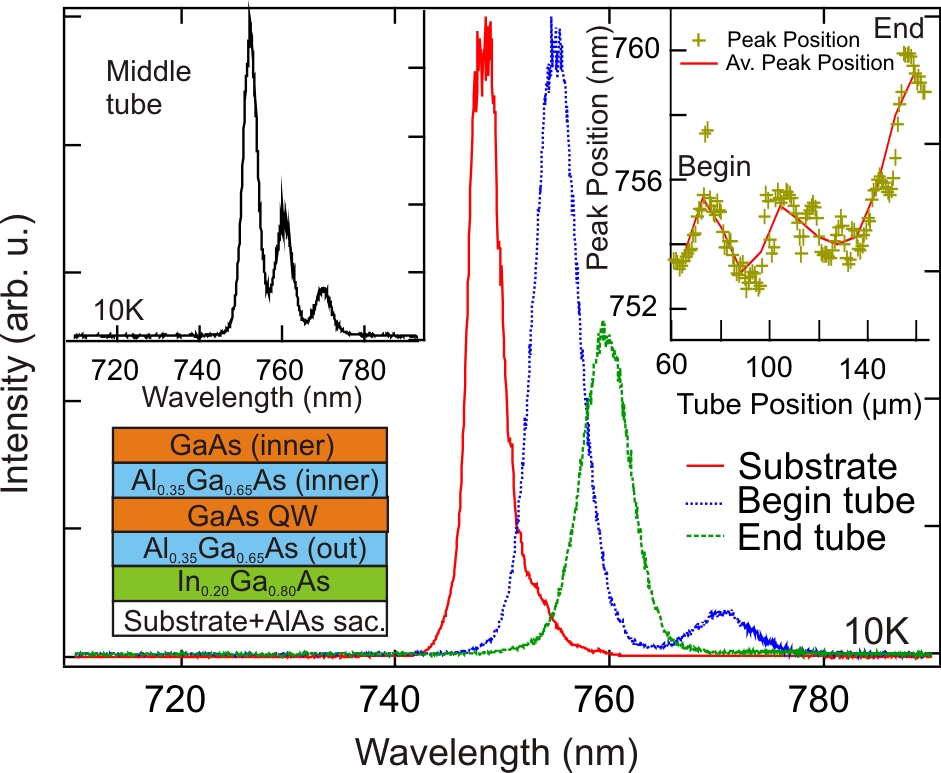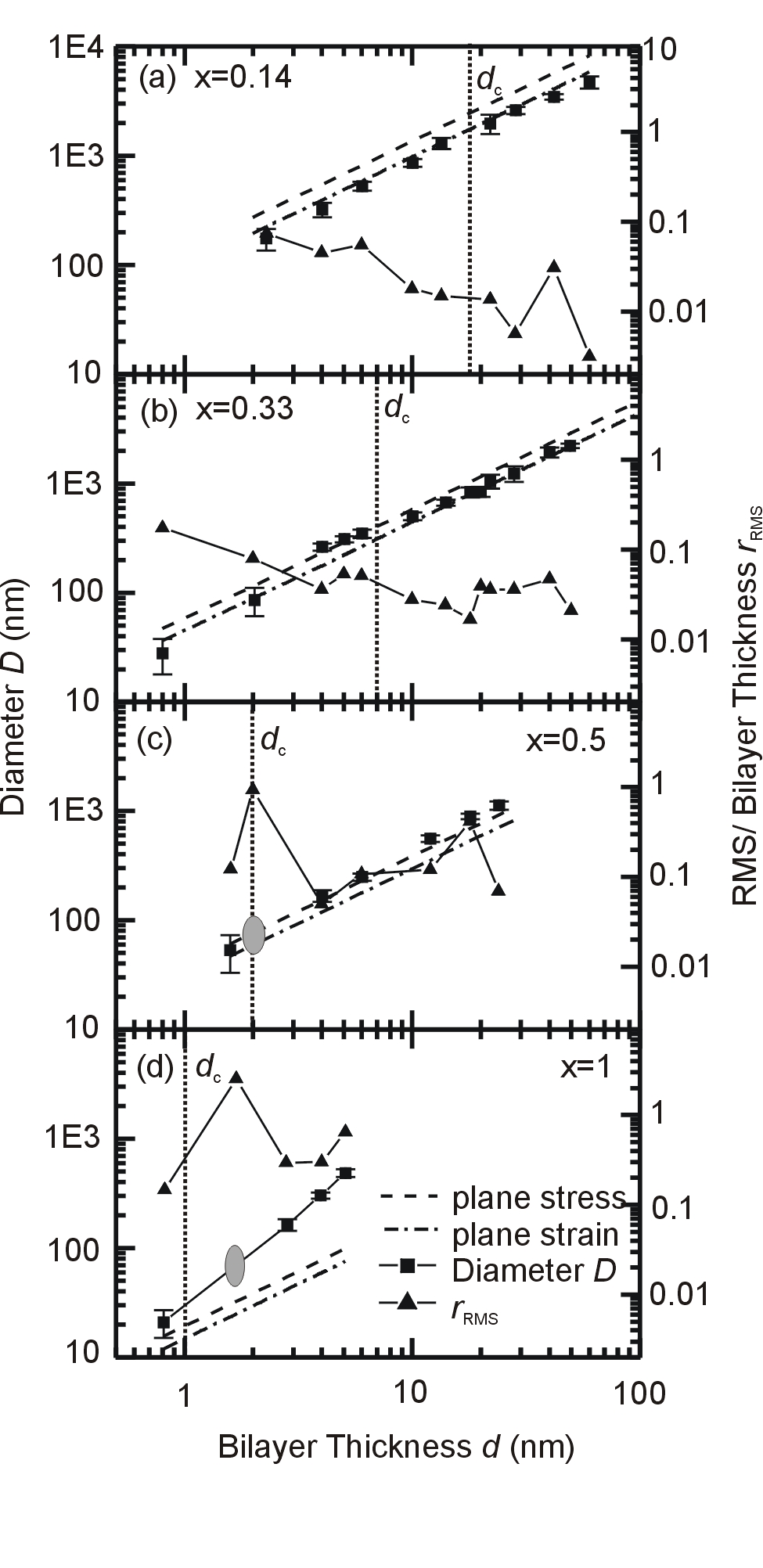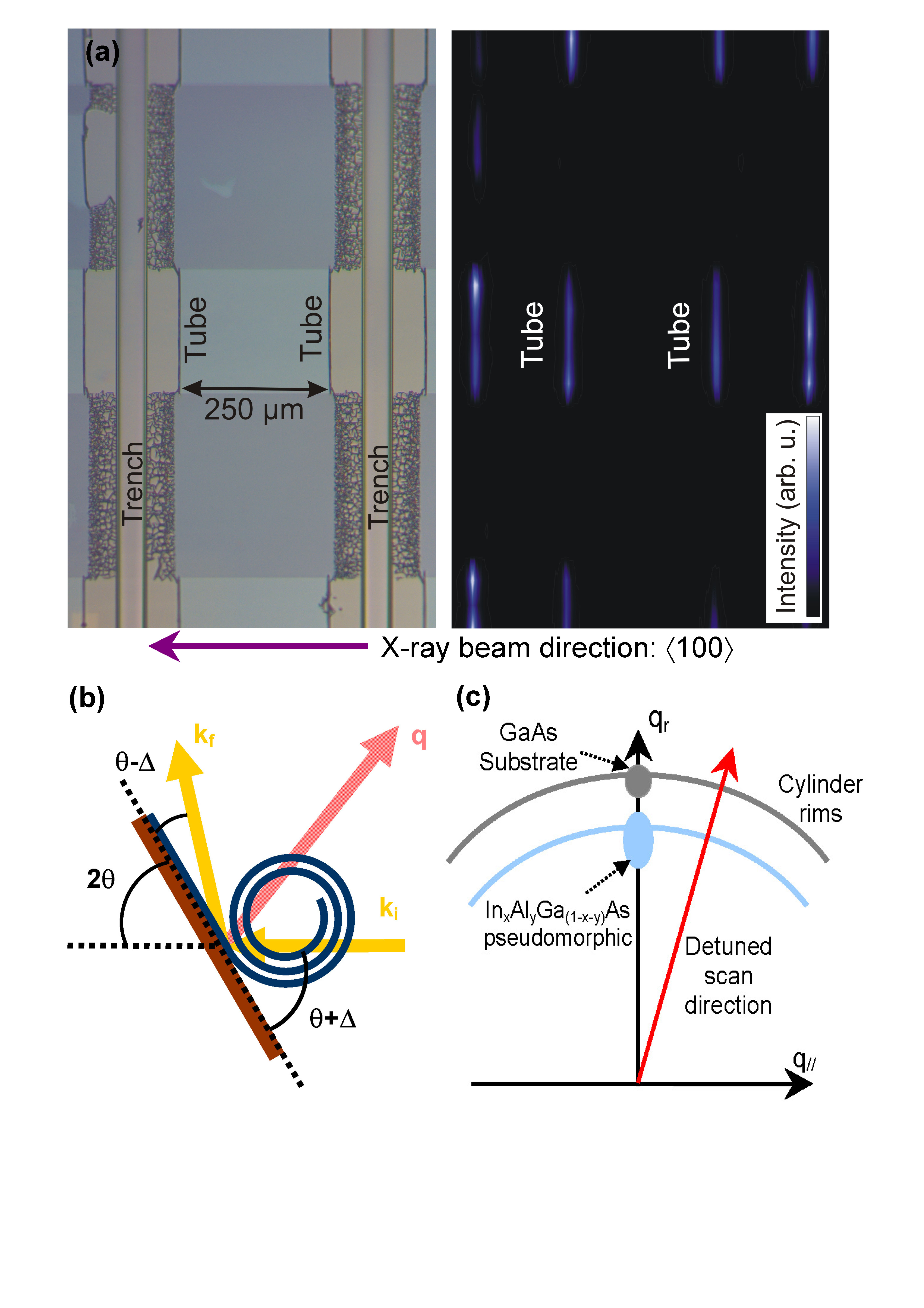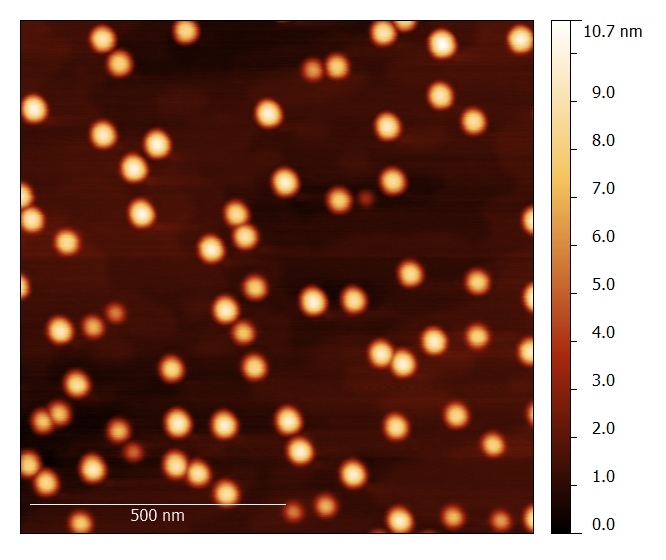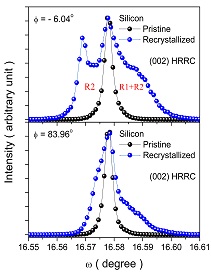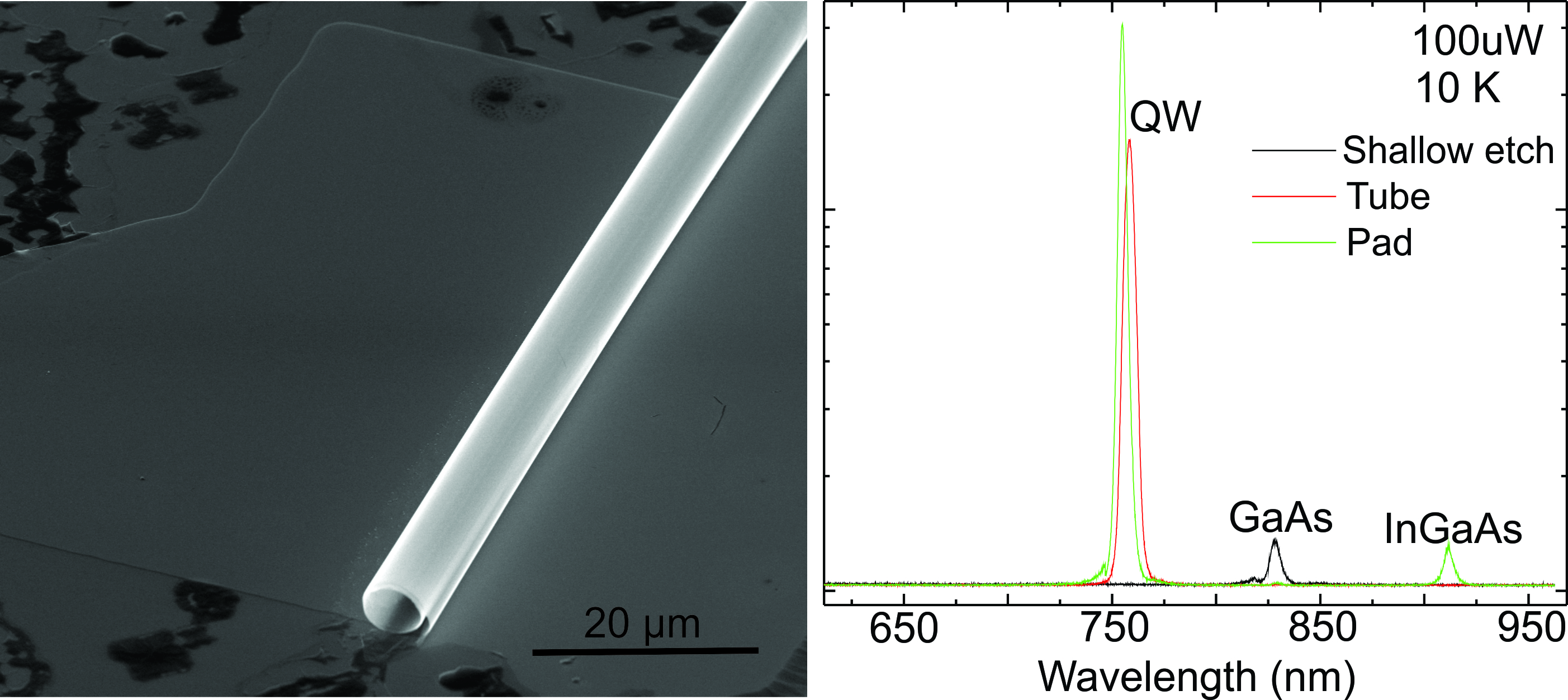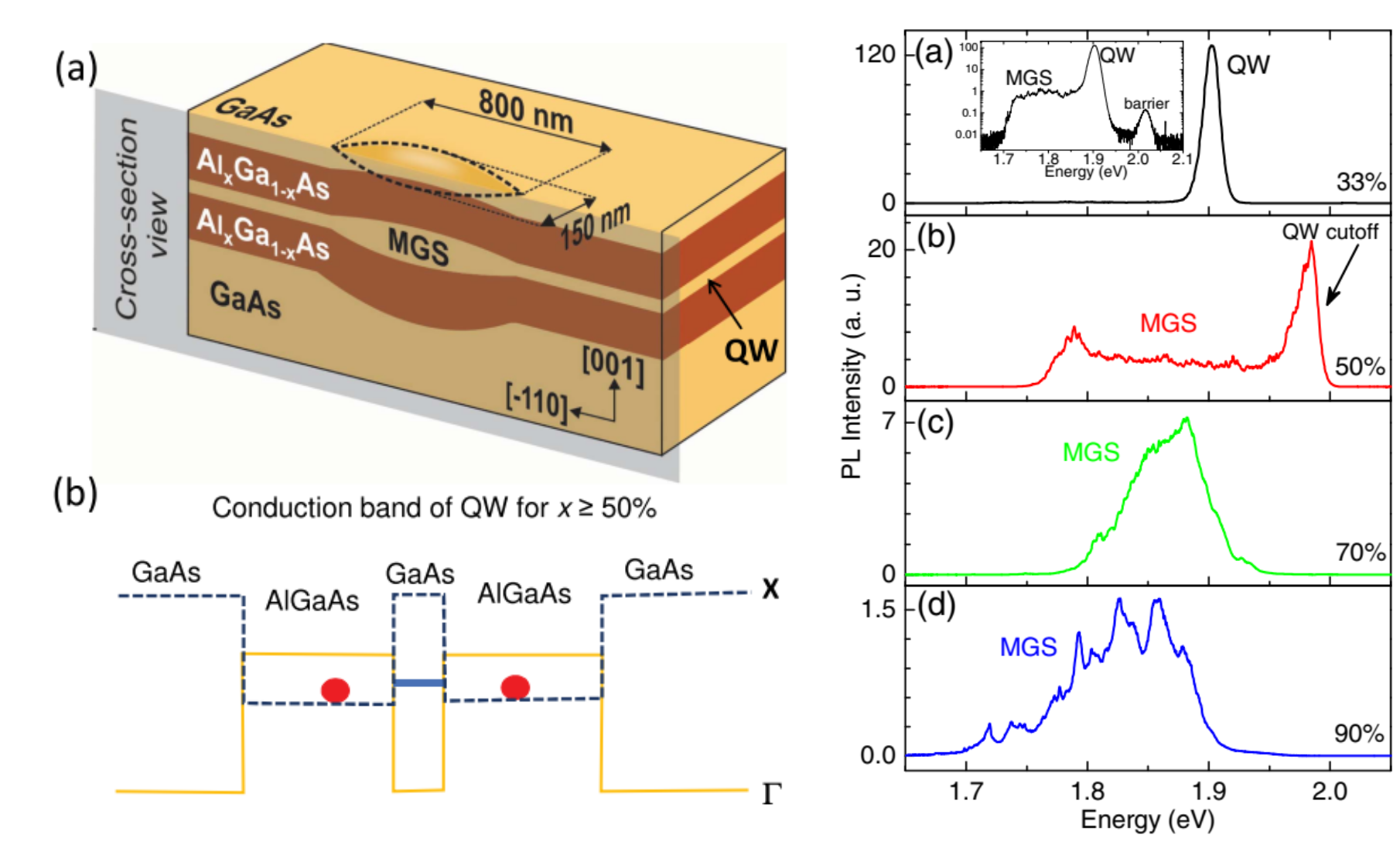A new article from our collaboration with the UFV is out in Nanoscale:
Lattice stability and elastic evolution of CdTe membranes fabrication using a III-V heterostructures as a substrate
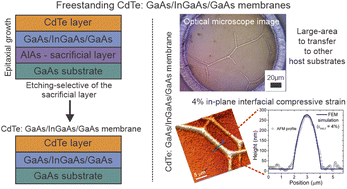 CdTe is a key binary compound for II-VI semiconductor systems since the precise control of its growth over different semiconductor materials of different orientations provides a general roadmap for telluride compounds, ranging from optically active layers to diluted magnetic semiconductors and topological insulators. The precise understanding of its epitaxy, film orientation and built-in strain is crucial for II-VI layer integration with commercial hosting substrates used for the latest semiconductor process nodes such as Si and GaAs. In this work, we show that it is feasible to use CdTe:GaAs/InGaAs/GaAs released membranes, yielding high-quality crystalline layers. A combination of Raman scattering and X-ray diffraction results provide a concise scenario of evolution along different growth stages. Surface roughness and contact potential are evaluated by atomic force and Kelvin-probe microscopy, respectively. The coexistence of faceting types (001) and (111) becomes clear using AFM and KPFM near the edge of a CdTe membrane. At such edges the local cleavage of the membrane is probed, exposing several layer steps and reflecting the growth history of CdTe. In this condition, KPFM clearly differentiates faceting (throughout contact potential difference) more accurately than height profiles, allowing a qualitative explanation of the nucleation evolution in our system. Finally, the occurrence of a 4% in-plane interfacial compressive strain is observed by nanomembrane release and modelling with finite element methods. The results showing the flexibility of high-quality CdTe layers here can improve optoelectronic integration of II-VI semiconductors.
CdTe is a key binary compound for II-VI semiconductor systems since the precise control of its growth over different semiconductor materials of different orientations provides a general roadmap for telluride compounds, ranging from optically active layers to diluted magnetic semiconductors and topological insulators. The precise understanding of its epitaxy, film orientation and built-in strain is crucial for II-VI layer integration with commercial hosting substrates used for the latest semiconductor process nodes such as Si and GaAs. In this work, we show that it is feasible to use CdTe:GaAs/InGaAs/GaAs released membranes, yielding high-quality crystalline layers. A combination of Raman scattering and X-ray diffraction results provide a concise scenario of evolution along different growth stages. Surface roughness and contact potential are evaluated by atomic force and Kelvin-probe microscopy, respectively. The coexistence of faceting types (001) and (111) becomes clear using AFM and KPFM near the edge of a CdTe membrane. At such edges the local cleavage of the membrane is probed, exposing several layer steps and reflecting the growth history of CdTe. In this condition, KPFM clearly differentiates faceting (throughout contact potential difference) more accurately than height profiles, allowing a qualitative explanation of the nucleation evolution in our system. Finally, the occurrence of a 4% in-plane interfacial compressive strain is observed by nanomembrane release and modelling with finite element methods. The results showing the flexibility of high-quality CdTe layers here can improve optoelectronic integration of II-VI semiconductors.
Wesley Fiorio Inoch, Eduarda Policarpo, Misael Cesar Isaac Muniz, Angelo Malachias, Gilberto Rodrigues-Junior, Sukarno Olavo Ferreira, Christoph Deneke, Bráulio Soares Archanjo, Erika Peixoto Pimenta Peixoto Pimenta, Luciano Moura, Eduardo Nery Duarte Araujo and Leonarde do Nascimento N. Rodrigues
Nanoscale, 2025, 17, 15279 – 15288
DOI: https://doi.org/10.1039/D4NR05029K

